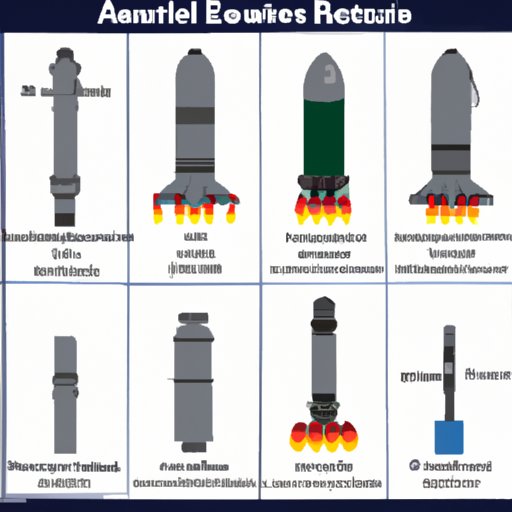Introduction
A rocket engine is a type of motor that propels vehicles by generating thrust with the exhaust of hot gases. It works by pushing hot gases out of the back of the engine, creating a reaction which causes the rocket to move forward. The purpose of a rocket engine is to provide large amounts of thrust in order to quickly move objects through the air or outer space.
Anatomy of a Rocket Engine
A rocket engine consists of several key components which allow it to function. The most important components are the combustion chamber, injectors, turbopumps, and nozzles.
The combustion chamber is where the fuel and oxidizer are mixed and burned. This creates hot gases that can then be pushed out of the engine. Injectors are used to mix the fuel and oxidizer at the right ratio, while turbopumps are used to pump the fuel and oxidizer into the combustion chamber. Finally, the nozzle is used to shape the exhaust gases and direct them out of the engine, creating thrust.
When the fuel and oxidizer are injected into the combustion chamber, they are lit on fire. This creates hot gases which are then directed out of the engine by the nozzle. As these gases leave the engine, they create a reaction which pushes the rocket forward. This is known as the reaction principle.
Principles Behind Rocket Propulsion
Rocket propulsion is based on Isaac Newton’s three laws of motion. The first law states that an object will remain at rest or in uniform motion unless acted upon by an external force. The second law states that the acceleration of an object is proportional to the net force acting on it. Finally, the third law states that for every action there is an equal and opposite reaction.
These laws form the basis of the reaction principle, which states that when a rocket expels hot gases out of its engine, it experiences an equal and opposite reaction in the form of thrust. This thrust causes the rocket to move forward. This same principle is used in modern rocket engines.

Types of Fuel Used in Rocket Engines
Rocket engines use two types of fuel: liquid fuel and solid fuel. Liquid fuel is stored in tanks and pumped into the engine as needed. Solid fuel is pre-mixed and packed into solid blocks, which are then ignited inside the engine. Each type of fuel has its own advantages and disadvantages.
Liquid fuel is more efficient than solid fuel, but it is also more expensive and difficult to store. Solid fuel is cheaper and easier to store, but it is less efficient. Both types of fuel have been used in successful rocket launches.

Comparison of Different Rocket Engines
There are several different types of rocket engines, each with its own advantages and disadvantages. Chemical rockets are the most common type, and they use chemical reactions to generate thrust. Electric rockets use electric fields to accelerate ions and create thrust, while nuclear rockets use nuclear reactions to generate thrust.
Chemical rockets are the most efficient type, but they are also the most expensive. Electric rockets are cheaper, but they are not as efficient as chemical rockets. Nuclear rockets are the least efficient, but they can generate the highest amount of thrust.
Physics of Rocket Flight
The physics of rocket flight involves understanding the forces that act on a rocket during its journey. These include gravitational force, atmospheric drag, and the thrust generated by the rocket engine. All of these forces must be taken into account when designing a rocket engine.
Gravitational force affects the trajectory of a rocket, while atmospheric drag affects its speed. The thrust of the engine must be adjusted to counteract these forces and ensure that the rocket stays on course. By understanding the physics of rocket flight, engineers can design better engines that are able to reach their destination more accurately.
Conclusion
A rocket engine is a type of motor that propels vehicles by generating thrust with the exhaust of hot gases. It works by pushing hot gases out of the back of the engine, creating a reaction which causes the rocket to move forward. Rocket engines use liquid and solid fuel, and there are several different types of engines, such as chemical, electric, and nuclear. Finally, the physics of rocket flight must be taken into account when designing a rocket engine.
Rocket engines offer many benefits, including the ability to quickly move objects through the air or outer space. They are also relatively efficient and reliable. With advances in technology, rocket engines are becoming even more powerful and capable of reaching greater heights and speeds.
(Note: Is this article not meeting your expectations? Do you have knowledge or insights to share? Unlock new opportunities and expand your reach by joining our authors team. Click Registration to join us and share your expertise with our readers.)
